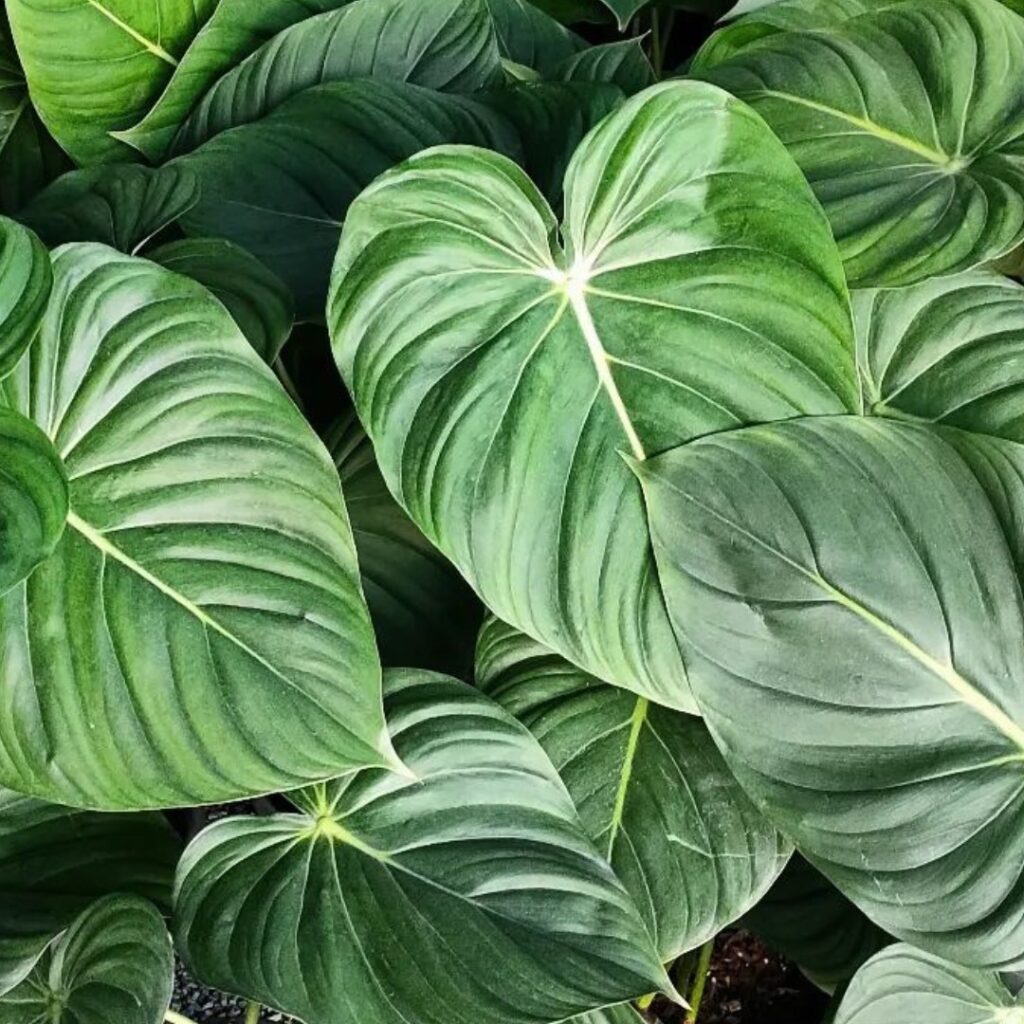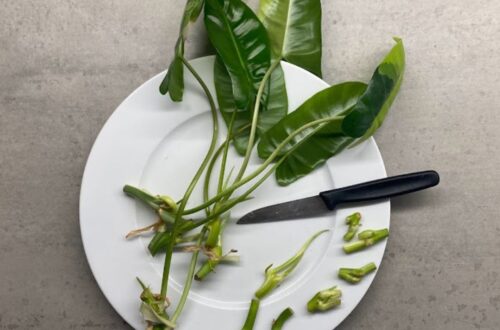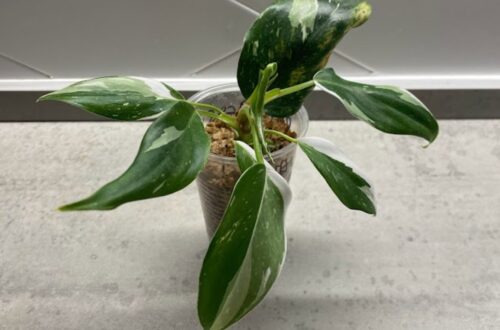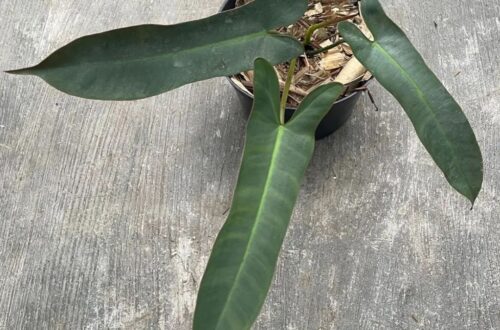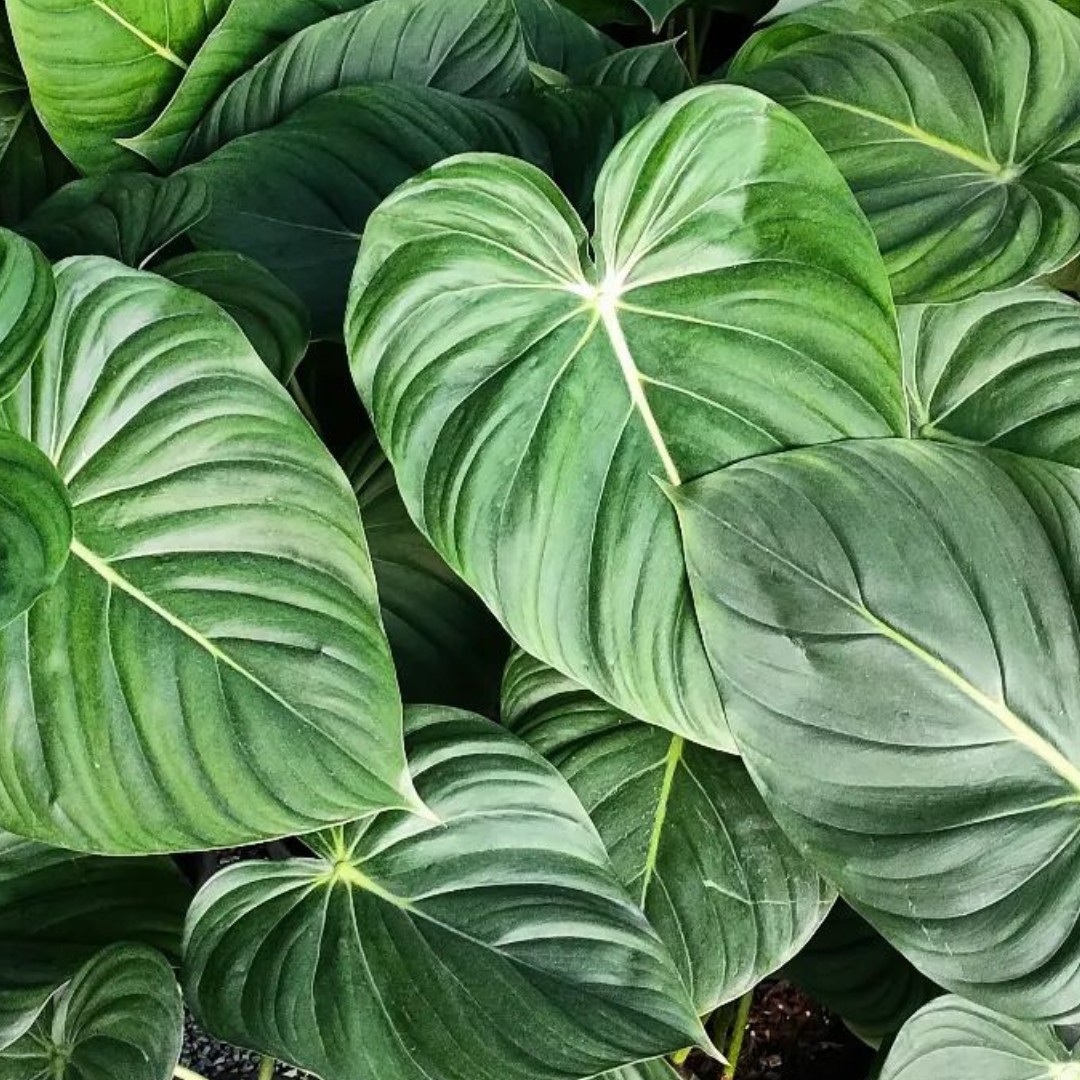
Philodendron McDowell
A comprehensive guide to the care and propagation of this billowing beauty: Philodendron McDowell. The key to Philodendron McDowell care is to give it bright indirect sunlight, a well draining and airy potting mix, and only water it sparingly.
Philodendron McDowell Care Summary
| Light needs: | Bright indirect sunlight. |
| Watering needs: | Check soil weekly and water if dry. |
| Fertilizer: | A balanced fertilizer monthly in spring and summer. |
| Soil: | A mix or orchid bark, perlite and normal potting compost. |
| Humidity: | 65-75%. |
| Temperature: | 13°C to 26°C (55°F – 80°F). |
| Where to buy: | Try our list of Rare Plant Shops. |
| Other names: | Philodendron Dean McDowell, gloriosum x pastazanum |
| Common issues: | Overwatering. |
Introduction
A gorgeous cross between the Philodendron Mcdowell Vs Gloriosum, the Philodendron McDowell was made by John Banta in 1988 and carries the name of his friend, Dean McDowell. Growing to a max height of 2-3 feet, the McDowell sports large, rich green leaves with white distinct veining. Each section between the veining almost looks like a pillow as these lobes have a raised, rounded appearance. The Philodendron McDowell is a rare plant to come by and currently in very in demand.
See also: Philodendron Soil, Philodendron Glorious Care, Philodendron Splendid, Philodendron White Knight.
Tip: we recommend Etsy for buying plants. Look for the best rated seller you can, and try to buy as close to your home as possible so the plant does not travel too far.
A note about affiliate links: when you buy a plant, pots, soil, or other goods through links on this article we sometimes earn a commission. It doesn’t cost you anything, but it really helps us out if you do use them. Thanks a lot! An example of this is if you buy a plant on Etsy using this link. Read our privacy policy for more information. Thanks again.
Philodendron McDowell Light Needs
Like many other Philodendrons, the McDowell prefers and grows best in bright, indirect light. Think of this as filtered light from a bright south or west facing window. Filtered could mean having a sheer, see-through curtain, or possibly a film on the window like you may see in a bathroom. Too low light will result in small leaves with longer stems. Too much light for a long duration could result in a sunburn on your plant. Yes, plant sunburns can happen!
How Often To Water
The best tip when it comes to Philodendron McDowell is don’t overwater! These Philodendrons like to almost completely dry out between waterings. Stick a finger or chopstick into the soil and make sure that all the way down into the pot is dry. If dirt sticks to your finger or the chopstick, it’s still moist, and it will be best to give the plant a few more days before soaking it. Make sure that you completely saturate the soil each time you water with the water running out of the drainage hole of your pot. Then you can wait for the soil to completely dry, and repeat the process! One thing to keep in mind is if you have your McDowell in a terracotta pot, it will dry out faster because terracotta is porous and it pulls water out of the soil.
Tip: Let the soil mostly dry out before watering again, they can get root rot relatively easily. Make sure all water drains out of the pot after watering before putting it back in its external pot or saucer.
Fertilizer
Compared to other Philodendrons that are climbers, you’ll want to fertilize the McDowell a bit more. The McDowell is a terrestrial plant, which means that it climbs along the forest floor instead of climbing trees. It will naturally be receiving more nutrients this way, and be used to receiving more. To provide natural fertilizer to your McDowell, choose a potting mix high in organic matter when first potting your plant up. For additional fertilizer, every four to six weeks is a good timeframe during the warmer seasons of spring and summer. Choose a water-soluble fertilizer that has a balanced amount of nitrogen, phosphorus, and potassium or a ratio such as 20-20-20.
Soil
The Philodendron McDowell is a part of the aroid family. This means that it grows best in chunky, airy, well-draining soil. The best additives to your soil mix will be orchid bark, perlite, sphagnum moss, peat, coconut coir or activated charcoal. You’ll also want a natural fertilizer such as worm castings. Here are a few soil mixture ratios that would work well:
- 20% orchid bark, 40% regular potting soil, 10% worm castings, 20% perlite, 10% spaghnum moss
- 50% peat, 20% compost, 30% regular potting soil
- 30% part potting mix, 30% part orchid bark, 30% part perlite, 10% part activated charcoal
For more on philodendron soil, see our guide here: Philodendron Soil.
For more on philodendrons see our philodendron category with all our philodendron care guides.
When To Repot
Philodendron McDowells don’t have a huge root system, so the best time to repot would be if you would like to give your plant more space to trail. If you want BIG leaves, you can provide it a rectangular pot to trail along horizontally.
Humidity
The parents of the Philodendron McDowell, the Gloriosum and Pastazanum are native to Columbia, Ecuador, and Peru. Therefore, the Philodendron McDowell loves higher humidity levels between 65% to 75%.
Temperature
They do ok between 55°F and 80°F or around 13°C to 26°C. Ideally, however, the best growing range would be 70°F to 80°F or around 21°C to 26°C. It is ok if the temperatures dip a bit at night.
How To Propagate Philodendron McDowell
Propagating a Philodendron McDowell is very similar to many other tropical houseplants. You’ll want to chop a section off between the nodes. You can tell there is a node if both an aerial root and a leaf are protruding from a section. Then, there will be another aerial root and leaf together down the line. Cut the plant between these two sections. Then, you can simply pot this up if the root is longer than about a fingers length. If it is shorter, you’ll want to ensure the root grows longer before putting it into a pot. You can simply place the cutting into water, spagnum moss, or pure perlite. For best success, only place the root into the water, spagnum moss, or perlite, keeping the stem out. If the stem is kept in a wet environment, there is a higher chance of root rot occurring.
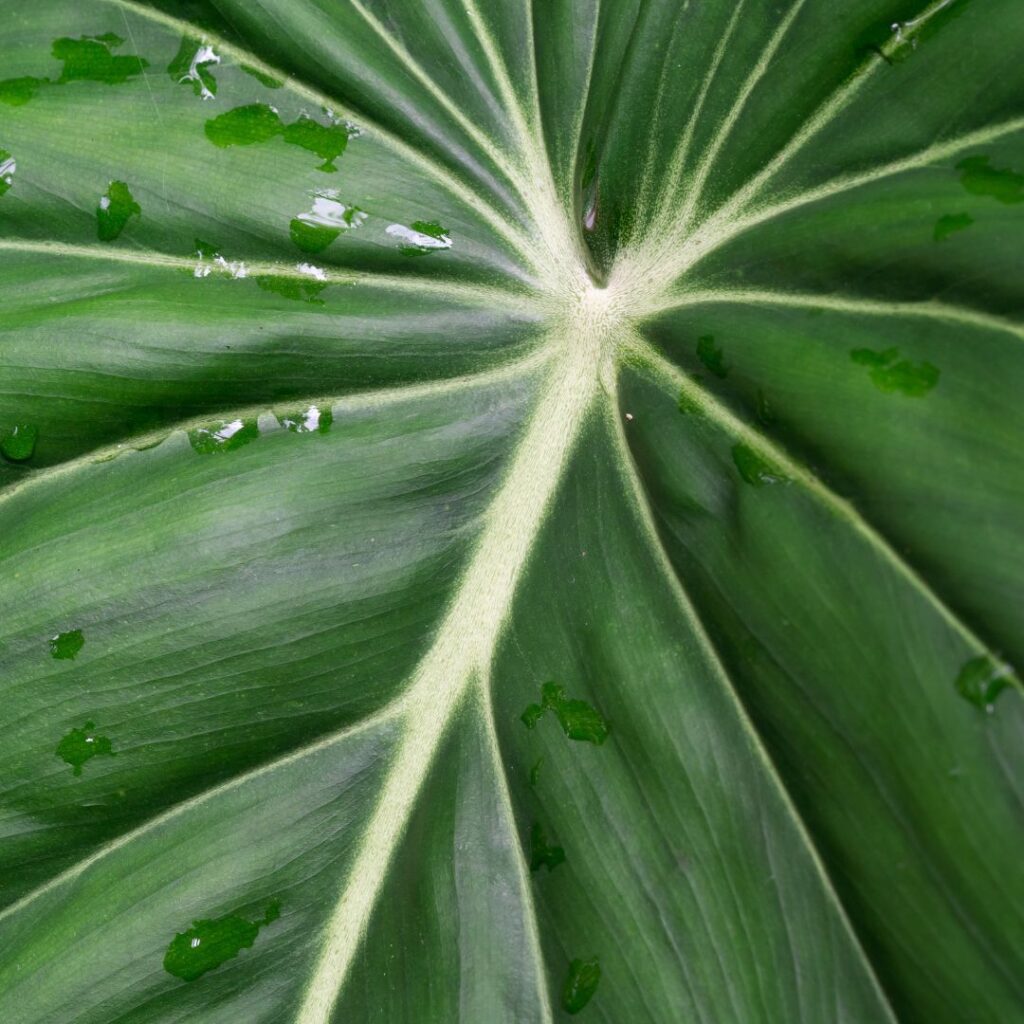
Is It Toxic To Cats?
They are toxic to cats and dogs, and can cause vomiting and irritation of the mouth if eaten, so seek vets advice if you think your cat has eaten any.
Philodendron Mcdowell USDA Zone
You can keep i outside if you live in zones 9b to 11. In colder climates you can take it outside in the summer as long as the temperature don’t dip below 10°C (50°F).
Philodendron Mcdowell Price
Currently they go for 50-170 euros. And similar dollar amounts in North America. They are being tissue cultured, and vey small plants are on sale for a bit less.
Philodendron Mcdowell Scientific Name
Philodendron gloriosum x pastazanum.
Other Names
The Philodendron McDowell is simple. It either goes by Philodendron McDowell or Philodendron Dean McDowell. It can also be written as gloriosum x pastazanum since it is a cross of these two Philodendrons.
Where To Buy
Try our list of Rare Plant Shops.
FAQ’s
- Because the McDowell is a hybrid between its two parent plants, it shares traits from both of them. For example, new stems (also called cataphyll) on the McDowell are first bright red. This is a trait from the Gloriosum parent because if it was purely a Philodendron Pastazanum the cataphylls would be only green.
- The maximum length that a McDowell can grow is up to 6.5 feet horizontally.
Philodendron Mcdowell Vs Gloriosum
The philodendron Mcdowell is really similar to the gloriosum as it is a hybrid of it, and the pastazanum so they share many similar qualities. One of the main differences is the Mcdowell has more glossy, shinier leaves.
Philodendron Mcdowell Vs Pastazanum
The pastazanum is similar to the McDowell, as the McDowell is a cross of the pastazanum and gloriousum. The pastazanum has much shinier glossier leaves than the McDowell which is a halfway point between the duller green leaves of the gloriosum and the really glossy shine of the pastazanum.
Is Philodendron Mcdowell A Crawler?
The McDowell grows sideways, it is a crawler.
Common Pests and Best Treatments
The most common houseplant pests are spider mites, mealybugs, thrips, scale, and aphids. These can attack all houseplants including your Philodendron McDowell. For spider mites or thrips, a diluted solution of water and neem oil is best sprayed all over the plant. For larger insects such as the mealybugs, aphids, or scale, you can use a cotton swab dipped in rubbing alcohol to rub them off. You can also wash the leaves in a organic insecticidal soap. It is a good idea to check for pests when watering the plant, be sure to check underneath the leaves too.
Additional Resources
Buy: we recommend a digital thermometer hygrometer (amazon affiliate link) to measure humidity.
Other Articles You Might Like
Hope you liked our article, you might also like these articles: Philodendron Soil, Philodendron Glorious Care, Philodendron Splendid, Philodendron White Knight.
Please follow us on Instagram and Pinterest for regular plant updates and occasional plant giveaways.
